11 Best first-time Europe itineraries for 1, 2, or 3 weeks
Europe is going to be very busy in the summer of 2024 as the world is back to normal and travel demand is higher than ever. One other key factor is that most European currencies are still hovering at lower levels historically compared to the US dollar, which means that Europe will feel somewhat cheap again this year. In fact, according to our World Backpacker Index, European cities like Lisbon, Madrid, and Munich are about 30% cheaper to visit than Boston, Chicago, and New York City. In other words, flying to Europe might seem expensive, but most things will be cheaper once you get there compared to the costs of visiting a large US city.
Below you’ll find 11 of the most popular and best itineraries for a first visit to Europe. Your first visit is not really the time to be different or creative, and the famous destinations tend to be popular for a reason. In other words, it’s kind of silly to visit, say, Bulgaria, if you’ve not yet been to France or Italy. I lay out the best options along with how long to stay in each place as a general guide. I also discuss Mediterranean cruises, which can actually be an amazing way to see a lot of Europe on your first visit, especially if you don’t like going back and forth to train stations and airports every 2 or 3 days.
For a bit of fun you might be interested in the cheapest 5-star hotels in Europe, which start at US$80 per night for really nice hotels. It helps show that if you choose some of the cheaper cities, you can treat yourself to some luxury that you can’t afford in most other places.
This article was last updated in March, 2024.
There are 11 starter itineraries described in detail below
- Classic London and Paris
- England and Scotland
- Paris and Italy
- Mediterranean cruise
- France, Belgium, and Netherlands
- Paris and elsewhere in France
- Italy
- Spain
- Germany
- Switzerland
- Best of cheap eastern Europe
For each itinerary there are suggestions of other destinations that are easy to add on to the main cities.
Note: This article was most recently updated in March, 2024
Building the best itinerary for your first trip to Europe
Below there are 11 popular itineraries for one week in Europe. If you’ve only got a week then choose one of them and assume you’ll return again to conquer more of this amazing part of the world. If you’ve got more time then you can choose from some of the top add-on suggestions for each one.
Start in the most famous cities
Your first visit to Europe is no time to try to be different or edgy. I recommend that you focus on these 5 great cities before you start branching out into cheaper or more obscure places.
Keep your travel days to a minimum
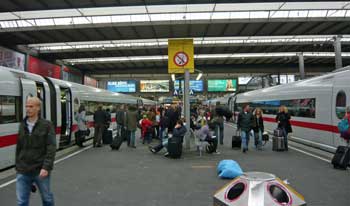
Spend 3 (or 4) nights in almost every major city
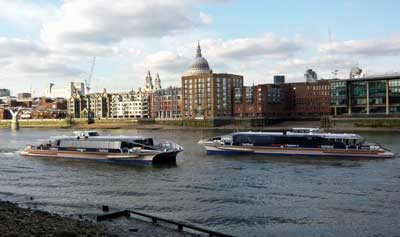
So many first-time visitors are initially planning on spending only 1 or 2 nights in major cities that I wrote a detailed explanation of why 3 nights is ideal for almost all European cities, even if you want to see as much as possible.
3 (or 4) nights will be enough for any city on your first trip
Most first-time visitors are tempted to move too quickly, but it can also be a mistake to move too slowly. It’s really amazing how much you can see in two full sightseeing days. If you spend too long in one city you’ll end up seeing things that are way down your list, while you could be in another city seeing things at the top of your list there.
Choose cities that are easy to reach from each other
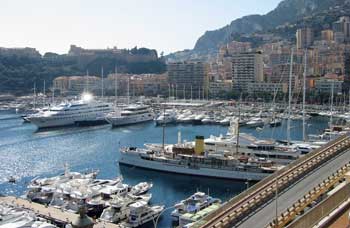
For your first trip it’s best to visit cities that are no more than a 5-hour train ride apart.
Choose cities that are connected by reasonable train rides rather than flights
To build on the point above, finding cheap flights within Europe is easy, but train travel is about a million times more enjoyable and less stressful. You’ll enjoy the train rides almost as much as the cities, so focus on places that are within 5 hours of each other by train.
Start with one of the classic itineraries below, and then add to it if you have more time
If you only have 7 days then you’ll find a list below of classic itineraries that are well-suited to a first visit to Europe. Hopefully you have more than 7 days though, and if you do you can add in one or more of the suggested add-on cities to build an itinerary that appeals most to you.
Best 1-week itineraries for the first time in Europe
Itinerary 1: Classic London and Paris
Fly into either city and take the 2-hour Eurostar train between them
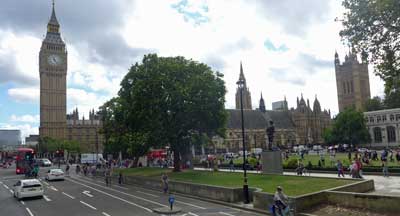
London highlights
- Big Ben and Parliament
- Westminster Abbey and St. Paul’s Cathedral
- Tower of London and Tower Bridge
- West End shows (Broadway equivalent) and classic pubs
- Buckingham Palace and Windsor Castle
Paris is actually far more beautiful than London and the food is famously much better as well. Since Paris gets so many tourists from non-French speaking countries, it’s easy to get by on just English, and the Metro system makes it fast and easy to get around. The architecture of both cities is amazing from the Tower of London, Big Ben, Westminster Abbey to the Louvre and the Eiffel Tower. These cities each pack a huge punch and they are very different from each other as well. Actually, England is arguably the best choice for your first trip to Europe.
Paris highlights
- Eiffel Tower
- Louvre Museum and Museum de Orsay
- Arc de Triomphe and other monuments
- Montmartre neighborhood and Sacré Coeur Cathedral
- Probably the world’s best affordable restaurants and wine
Best add-ons to London and Paris
- Edinburgh (2 or 3 nights, from London)
- Amsterdam (2 or 3 nights, from Paris)
- Bruges and Brussels (2 nights, from Paris)
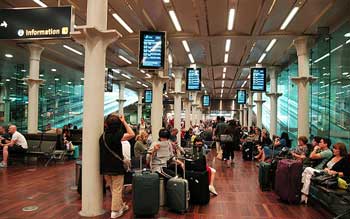
>>>Best one-week London and Paris itinerary in detail
>>>Check London hotel deals
>>>Check Paris hotel deals
Itinerary 2: England and Scotland
- London (3 or 4 nights)
- York (1 night)
- Edinburgh, Scotland (2 or 3 nights)
- Inverness, Scotland (2 or 3 nights)
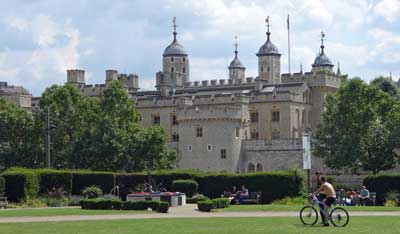
York is a small Roman city with intact city walls and one of the most famous cathedrals in Europe. Edinburgh is not only the capital of Scotland, but it’s easily the second most interesting city in all of Britain. If your time is short, skip York and spend more time in Edinburgh.
If you prefer to focus on the south of England on your first trip then the best option is to go to Bath or nearby Bristol after London. Bath is another of England’s top destinations and it’s a gorgeous city that has been a spa resort for many centuries. It’s also reasonably close to Stonehenge. You can also easily get to Cornwall in England’s southwest corner from Bath, and that’s a whole different and fascinating experience (with nicer weather than up north).
If you’ve got more than a week and want to spend more time in Scotland, especially in the summer months, the place to head to is Inverness. It’s a small town that is considered the gateway to the Scottish Highlands, but it’s an interesting and charming place on its own. You can take day-trips by bus to the highlights of the Highlands including the Isle of Skye and Loch Ness. Between you and me, it’s better to minimize time in Loch Ness or skip it altogether because it’s not one of the more photogenic parts of Scotland and the monster has always been a hoax.
Travel times between the recommended places
- London to York by train: 2 hours
- York to Edinburgh by train: 2.5 hours
- London to Edinburgh by train: 4 hours
- Edinburgh to Inverness by train: 3.5 hours
- London to Bath by train: 85 minutes
Best add-ons to England and Scotland
If you think you want to spend your whole trip in Britain you should have a look at our article on the best itineraries in England, Scotland, and Wales.
>>>Check London hotel deals
>>>Check Edinburgh hotel deals
Itinerary 3: Paris and Italy
- Paris (3 or 4 nights)
- Venice (1 night)
- Florence (2 or 3 nights)
- Rome (3 nights)
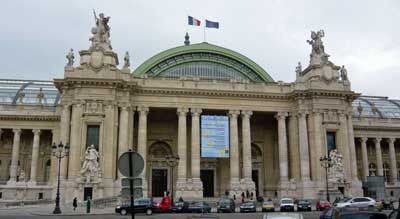
From Paris you can easily fly to Venice (or nearby Treviso) where you should try to spend about 24 hours. Venice is small enough to see in a full day, and so crowded that most people are satisfied to leave after that day. The key is to stay in the main part of the main island so you can enjoy Venice before the cruise passengers and day-trippers arrive, and also after they leave for the day. Two nights in Venice would not be wasted time, and it’s possibly the most gorgeous city in the entire world, but you can see the best of it in a bit over 24 hours.
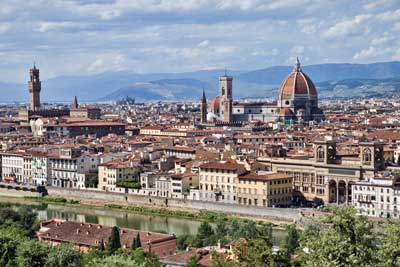
Rome also lives up to the hype and spending a day in the Vatican City will be a highlight even for non-Catholics, but it’s also a crowded and busy city so three days is usually enough for most people. Similar to Paris, Rome is an unusually beautiful city from almost any angle when you are in the historical center. You’ll walk through a stunning piazza (town square) and then turn a corner and you’ll see gorgeous buildings or public statues that are as nice as anything in the museums. Seriously, it’s worth a visit.
Paris to Venice flight: 1 hour 35 minutes
Venice to Florence by train: 1 hour 53 minutes
Florence to Rome by train: 1 hour 16 minutes
You can of course instead fly from Paris to Rome and then go north to Florence and then to Venice and fly home (or back to Paris) from there, and it would be just as enjoyable.
Best add-ons to Paris and Italy
France
- Nice/Cannes/Monaco (2 or 3 nights)
- Avignon (2 nights)
- Bourges (2 nights)
- Bordeaux (2 nights)
- Aix-en-Provence (2 nights)
- Reims (2 nights)
- Dijon/Burgundy (2 nights)
Italy
- Milan (1 or 2 nights)
- Lake Como (2 nights)
- Siena (2 nights)
- Cinque Terre (1 night)
- Naples/Sorrento/Amalfi Coast/Pompeii/Capri (3 to 5 nights)
- Sicily (3 to 4 nights)
>>>Much more information in this article about the best France and Italy itineraries
>>>Check Paris hotel deals
>>>Check Venice hotel deals
>>>Check Florence hotel deals
>>>Check Rome hotel deals
Itinerary 4: Mediterranean cruise
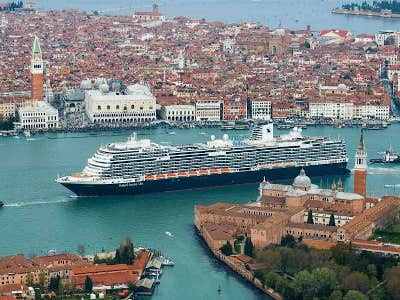
In spite of the reputation of cruises to be floating buffets, they can actually be an excellent way to visit a great number of amazing European cities in a short time. The ship typically is in port from the early morning until mid evening, often giving you the opportunity to have dinner in the city (unlike Caribbean cruises). Better still, the cruise ports are often near the center of town, so you can just walk off the ship and do sightseeing on foot or by public transportation.
Mediterranean cruises usually start at 7 nights but can go up to 3 weeks, which can provide an amazing tour of the entire region without having to pack and repack your bags more than once. They also can provide excellent value, especially compared to the price of taking trains or flights and finding new hotels in every destination.
Most popular Mediterranean departure ports
Barcelona, Spain – It’s an easy port to reach. Ships generally go from Barcelona with stops in France and then Italy.
Rome (Civitavecchia), Italy – The port isn’t very close to Rome, but it’s easy to get back and forth. Ships go west to France and Spain as well as south around the tip of Italy and then on to Croatia, Venice, and to Greece.
Venice, Italy – The cruise ships no longer dock close to the best tourist areas, but it’s easy enough to visit Venice for a day or two before boarding a ship. Ships starting in Venice go south and then head west and to Rome and then to France, or they go south to Croatia and then head east to Greece.
Athens, Greece – The cruise port of Piraeus is just south of Athens and easy to reach. Ships from Athens usually head west towards Croatia, Italy, France, and Spain, but there are also ships that visit Greek islands and Turkey.
>>>Check for deals on Mediterranean cruises
Alternative to consider: a river cruise
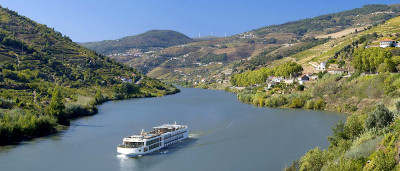
Amsterdam, Budapest, and Prague are some of the most popular river cruise ports, but there are dozens of others including many smaller towns in France where few other tourists will be when you stroll off the ship. There is little or no entertainment on the river cruise ships, but passengers don’t miss it because the entire day and into the evening is spent just steps from local cultural offerings and restaurants.
>>>Check for Europe and river cruise deals
Itinerary 5: France, Belgium, and Netherlands
Paris to Brussels: 1 hour 22 minutes
Brussels to Bruge: 58 minutes
Bruges to Amsterdam: 2 hours 45 minutes
Amsterdam to Paris: 3 hours 17 minutes
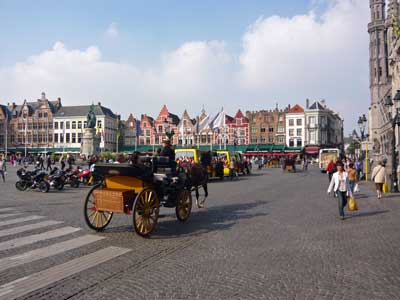
Spending 4 nights in Paris and 3 nights in Amsterdam would be a great trip, but if you want to see something else you’ve got a couple options in between. My advice is to spend an afternoon looking around the Grand Place (main square) in Brussels and then hop a 58-minute train ride to Bruges for a night or two. Brussels isn’t a great tourist city, but Bruges really is so it’s a better option for most people. Whatever you choose out of this group, you can be back in Paris on another high-speed train for your flight home.
Best add-ons to France, Belgium, and Netherlands
- Luxembourg City (1 or 2 nights)
- Cologne, Germany (1 or 2 nights)
- London (3 or 4 nights)
- Interlaken, Switzerland (2 or 3 nights)
>>>Check Paris hotel deals
>>>Check Bruges hotel deals
>>>Check Amsterdam hotel deals
Itinerary 6: Paris and elsewhere in France
- Paris (3 or 4 nights)
And a choice of:
- Nice/Cannes/Monaco (2 or 3 nights)
- Avignon (2 nights)
- Bourges (2 nights)
- Bordeaux (2 nights)
- Aix-en-Provence (2 nights)
- Reims (2 nights)
- Dijon/Burgundy (2 nights)
- Normandy (2 nights)

While Nice is a wonderful tourist city for a look at the French Riviera, the other larger cities of Lyon and Marseilles are probably better saved for a future trip because they are light on key sights compared to many smaller towns. Wine lovers can rent a car or take trains into Bordeaux or Burgundy. Since you can get between most of these towns by train in 2 hours or less, spending only 2 nights in each one is a reasonable option if you want to see a lot in a short time.
Normandy is an interesting choice and easy to reach in only about two hours by train from Paris. Some visitors like to see the famous WWII beaches and memorials, while others (especially in summer) like to check out one or more of the beach-resort towns. Deauville is one of the more famous of those, and it’s also famous for its horse race track and as one of the epicenters of the industry in Europe.
Best add-ons to Paris and elsewhere
- More France, of course
- London (3 or 4 nights)
- Interlaken, Switzerland (2 or 3 nights)
- Amsterdam (2 or 3 nights)
>>>Check Paris hotel deals
>>>Check Nice hotel deals
Itinerary 7: Italy
Rome to Florence: 1 hour 16 minutes
Florence to Venice: 1 hour 53 minutes
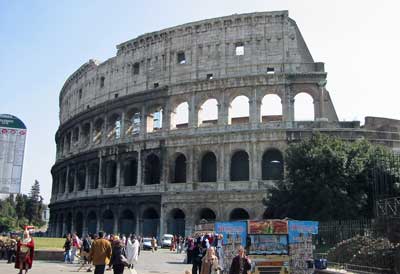
Venice is small enough that you can see the main sights in about 24 hours, and it’s so insanely crowded that many people tire of it after about a day as well. It’s better to pay more for a hotel to be on the main island and visit quickly than to save money with a hotel on the mainland where you’ll be in crowds going back and forth as well. Florence is the most relaxing of the 3, and also a great base for side trips to Pisa, Siena, and Cinque Terre, just to name a few.
Going to Italy? Here are the best first-time Italy itineraries for 3 days to 2 weeks (in much greater detail)
Best add-ons to Italy
- Milan (1 or 2 nights)
- Lake Como (2 nights)
- Siena (2 nights)
- Cinque Terre (1 night)
- Naples/Sorrento/Amalfi Coast/Pompeii/Capri (3 to 5 nights)
- Sicily (3 to 4 nights)
>>>Check Rome hotel deals
>>>Check Florence hotel deals
>>>Check Venice hotel deals
Itinerary 8: Spain
Madrid to Barcelona: 2 hours 30 minutes
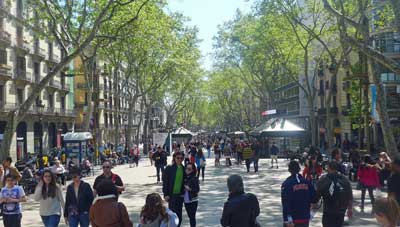
A huge part of Spain’s tourism industry is built around its southern beaches and islands such as Ibiza, Mallorca, and Tenerife (in the Canary Islands). For most people it’s best to ignore those places on your first trip because none of the beaches are special enough to spend days on them compared to the culture of the cities.
Best add-ons to Spain
By popular demand, I’ve added a full article on where to go in Spain with itineraries from 7 to 10 days up to two weeks.
>>>Check Madrid hotel deals
>>>Check Barcelona hotel deals
>>>Check Lisbon hotel deals
Itinerary 9: Germany
Berlin to Munich: 6 hours 2 minutes
Munich to Rothenburg ob der Tauber: 2 hours 56 minutes
Munich to Füssen: 2 hours 4 minutes
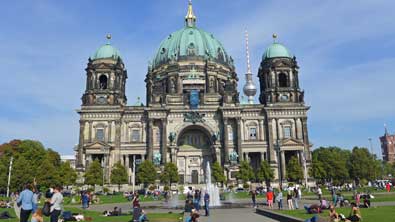
Those two cities are the keys to a Germany visit, and after that you’ve got a wide variety of choices. I cover most of the popular choices in my article on where to go in Germany, which covers several smaller towns that are major highlights.
Best add-ons to Germany
- Cologne (1 or 2 nights)
- Hamburg (2 or 3 nights)
- Amsterdam (3 nights)
- Prague (3 nights)
- Salzburg (2 or 3 nights)
- Vienna (3 nights)
- Interlaken, Switzerland (3 nights)
- Lucerne, Switzerland (2 or 3 nights)
>>>Check Berlin hotel deals
>>>Check Munich hotel deals
Itinerary 10: Switzerland
- Interlaken (3 nights)
- Bern (1 night)
- Lucerne (3 nights)
Zurich Airport to Interlaken: 2 hours 10 minutes
Interlaken to Bern: 53 minutes
Bern to Lucerne: 1 hour 50 minutes
Lucerne to Zurich Airport: 1 hour 3 minutes
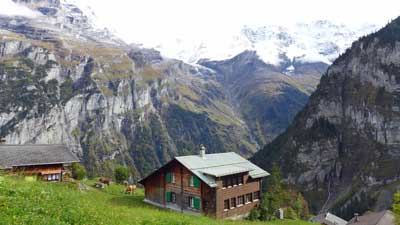
Interlaken is the best hub for the most dramatic Alps views and experiences. The one-hour cable car ride up to the Schilthorn observation deck is something you’ll never forget, and the only thing that might be more dramatic is the train ride up to the Jungfraujoch station, which is the highest in Europe. Lucerne is almost as beautiful with a scenic lake at its heart and also great mountaintop views nearby. If you do want to see a Swiss city then the capital of Bern is the most interesting and photogenic on a short visit. Read more about where to go in Switzerland for even more ideas.
Best add-ons to Switzerland
>>>Check Interlaken hotel deals
>>>Check Lucerne hotel deals
Itinerary 11: Eastern Europe’s best cheap cities
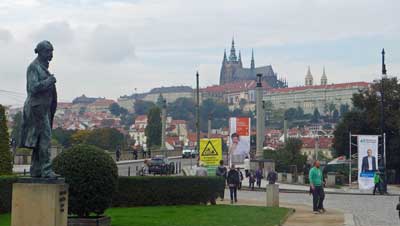
Each of these cities is beautiful and historic, but English is less widely spoken so they can also be quite a bit more challenging for a first-time visitor. Another difficulty is that the trains between them are still quite slow compared to the high-speed rail in the West, so it takes most of a day from one to another, and a bus is often a better choice. I cover this best cheap Europe itinerary more fully in the linked article.
Prague to Budapest: 6 hours 41 minutes
Budapest to Krakow: 9 hours 54 minutes (flying might be better)
Best add-ons to cheap Eastern Europe
- Cesky Krumlov, Czechia (2 nights)
- Ljubljana, Slovenia (2 or 3 nights)
- Split, Croatia (3 nights)
- Belgrade, Serbia (2 or 3 nights)
- Sarajevo, Bosnia and Herzegovina (2 or 3 nights)
- Sofia, Bulgaria (2 or 3 nights)
>>>Check Prague hotel deals
>>>Check Budapest hotel deals
>>>Check Krakow hotel deals


Roger,
Thank you for your great insights, I had no ideas about the small cities in Europe and mostly pictured them like fairy tale cities in my head, but I totally get what you are saying and I now think it would be best to start with bigger cultural cities to get acquainted with Europe first.
For this ~14 day trip, what would you think about this itinerary? Is it doable? do have any recommendations and advice?
Starting from Nice, making our way to Venice, Florance, Rome, then going to the coats of Naples, Amalfi, and Sorrento, getting back to Rome to fly home?
Again, we are pretty open with the choices, so any suggestions you might have, even for different cities and countries(like doing south of France and Spain, or Portugal and Spain) will be very helpful to us.
Yasmine,
I should have mentioned that there actually ARE a handful of small European cities that are old and historic, and Venice is actually one of them. But for the most part you’ll get a lot more history and culture in the larger and more famous cities. I think your itinerary looks great and although I wouldn’t recommend skipping Paris, it should work pretty well.
I’d do 2 or 3 days in Nice and then about 24 hours in Venice (or two days if you prefer) and then 3 days in Florence and 3 days in Rome. Then I’d go base myself in Sorrento to visit Naples, Pompeii, Amalfi, and the Isle of Capri if you have time. Sorrento is a really nice town that is convenient to all of those things. I’d save Spain and Portugal for your next trip. Let me know if you have any other questions. -Roger
Hi Roger,
I am so happy I came across your blog, you give great information and suggestion with so much patience.
I would appreciate it if you could help me with my trip plan as well. Me and my husband are planning to visit Europe for the first time. We are coming from the US and want to plan a 10~14 days trip in early July. The thing is, I was always fascinated by south of France and Italy for some reason, probably the authenticity and old feeling to it?. So we were thinking to do something in those areas, even though I have very little information about it.
For example, I was thinking we can start from Provence and then make our way to Nice, Genoa and then visit Italy, probably Florence and make our way to Naples and Amalfi. I would have loved to make Rome for Venice but it doesn’t seem possible. Now here are some of my questions:
Do you think these cities would live up to my fairy tale and adventure about them, or should we just stick to big and safe choice like Paris(we are pretty open and haven’t decided yet)?
If we decided to take this trip, what is the best transportation? Is renting a can in France and returning it in Italy going to cost substantial? Are there public transportations like trains?
And I would appreciate any other input and suggestions that come to your mind.
Thank you
Yasmine,
I’m also happy you found this website. For the most part I strongly recommend staying 3 nights in any city you visit for reasons explained at that link. If you do that it would mean visiting 3 to 5 places in 10 to 14 days. But if you prefer to focus on smaller towns then two nights in each one could work because it doesn’t take long to see the main sights in them. Honestly, I think I understand what you mean by wanting to stay in older and more authentic places, but it’s really the most famous cities where you’ll find that. For the most part the famous cities in France and Italy are at least 1,000 years old, and most coastal communities were small fishing villages until 50 years ago, and there isn’t much visible history in those (unless you go to Greece or Turkey).
It might also be worth you at least scanning this article I wrote about visiting Europe’s 5 great cities before exploring smaller or cheaper places. Paris, Rome, Florence, and Venice are all amazing, and the sights within Ancient Rome are thousands of years old. I really feel that you’ll get the best introduction to the finer things in Europe by focusing more on those places and then branching out on your next trip. Genoa, for example, isn’t really much of a tourist city and you might struggle to even find people who speak English well enough to help you once you leave your hotel.
As for transportation, if you did decide to focus on small towns then renting a car can make some sense, but I would still urge you to consider the trains instead. The European train system is amazing, efficient, relaxing, and if you buy tickets in advance it’s pretty cheap as well. Driving in Europe tends to be stressful for first-timers, and parking is notoriously difficult and expensive because they purposely try to limit auto traffic in popular cities. I’m happy to help more when you decide which type of trip you want to do, so feel free to ask more questions if you have them. -Roger
Hey Roger,
My girlfriend, my girlfriend’s grandparents, and I are planning our first visit in Europe for 3 weeks in May. I’m wondering what’s our best itinerary. We have Eurail pass for 6 days within our trip and we also have a family to stay at in Austria. The best deal we got since we live in Hawai’i would be going to Zurich Airport as it is close to their house in Austria. The plan so far are to visit Switzerland, Italy, France, and Austria. We’re planning to stay in Austria the longest and last. As with Eurail pass, we can use 1 pass as much as we can within a day.
Zein,
If you’ve got 21 days and it sounds like you’ll spend the last 6 or so of those in Austria, I think I’d do the first 3 days or so in Switzerland and then France and then Italy and then through the Alps to Austria. My article on where to go in Switzerland should help you figure out what to do there. That would then give you about 12 days for France and Italy. My article on where to go in France and Italy should also help.
One tricky and sometimes unfortunate thing about France is that for the popular intercity trains such as Paris to Nice, they require a mandatory seat reservation that can be expensive. In Italy a seat reservation is usually €10 and includes a drink, but in France they can be €35 for the fast trains. France also has a quota on rail pass seats, so it’s possible to try to get a seat reservation on a train that is only half full and find out that there are no rail-pass seats left. You can usually find another departure if you are doing this in advance, and if you take slower trains the seat reservation is lower or sometimes not required. The point is that you have to do your research on any train within France using a rail pass because there can be some surprises.
In Italy the train tickets are actually fairly cheap, and especially if you buy well in advance. From Rome to Florence it might be €50 if you buy on travel day, or only €20 if you buy a couple weeks in advance. So with Italy you might want to buy individual tickets and save the rail pass days for Switzerland, the way into France, the way into Italy, and from Italy to Austria. In Switzerland and Austria you generally don’t need a seat reservation, although in some cases you might have to leave after 9:30am for that. It’s confusing. I hope this helps. Let me know if you have any other questions. -Roger
Hi Roger,
Thanks for your insights. Im from Dominican Republic, an i’m planning my first trip to Europe with my husband for 10 nights on may. The best ticket prices from here is flying directly to Brussels, so I’m thinking to take this from a start. I want to plan at least 2 more cities, but it’s possible that i’ll need to return to DR from Brussels… what would you recommend? Paris? London? Amsterdam?
Thank you in advance!
Carolina,
All of those cities are connected by high-speed train lines, and the even the Brussels Airport is on the main train line, so you don’t even have to go into Brussels itself if you don’t want to. Personally, I find Brussels to be a bit boring after you’ve seen the wonderful area around the main square (Grand Place). My recommendation would be to spend one day in Brussels and the following morning take a train to Amsterdam and spend 3 days there. Then take the new Eurostar train service from Amsterdam to London (a bit under 4 hours) and spend 3 days there. Then take the Eurostar train back to Paris for 3 more days. Then you can take the train from Paris directly to the Brussels Airport (2 hours 10 minutes) for your flight home.
Brussels does have a charming central area and I’m sure you’ll like it, but if you want to see why I recommend the other three you can read a quick version of that in my article on Europe’s 5 great cities for first-time visitors. You could even skip Brussels for one day and spend that extra day in either Paris or London, unless you really want to see a bit of Brussels. Let me know if you have any other questions. -Roger
Hi Robert,
It’s a very helpful article and I’m very glad to see that you’re helping people with their personal itineraries too.
I’m an Indian student out on my first international trip to the UK and Europe. The trip begins of first may and ends on first June. In this time 14th to 25th I’m supposed to be in Brighton. I have friends in Eindhoven who I want to visit during the 4th-6th may weekend. So I have been contemplating to leave London on 2nd May and stop at a city before I reach Eindhoven. Spend the weekend in Eindhoven and visit cologne and strutgart maybe and then proceed to Paris. Return from Paris to London and then go to Brighton. After 25th I was thinking of going to Canterbury and dudrledoor and bath before taking my return flight from London.
Can you please advise me regarding how practical this trip plan is. I have applied for both my visas but haven’t made my bookings on stay or train/bus travel once I’m in Europe. I have my India to England to and fro flights booked. But that’s about all. Since I’m a student budget is a huge issue. I figured that I’m not too fond of the colonial history since my country was a colony for many years. I’d rather spend my days marvelling at the temperate zone natural phenomena. I’ve spent my entire life living in a tropical country I’d much rather track down the different migratory birds and sunbathing sharks or whales etc. I know budget constraints don’t go too well with those aspirations ( that’s what my research so far tells me) I’m really writing to you for a reality check.
Ankita,
This trip sounds really interesting and Brighton is one of my favorite smaller cities in England. As an American, my country hasn’t been a colony for almost 240 years so I can’t really identify with your feelings on that, although I do understand them to some degree.
You could take the Eurostar train from London to Brussels and then hop a one-hour suburban train to Bruges before going to Eindhoven a couple days later. Cologne and Stuttgart are both interesting, but I consider them 2nd tier cities even for Germany. If you could instead go from Einhoven to Berlin (via Amsterdam) I think you’d enjoy it more, and Munich is also very worthwhile.
As for England, you might have a scan of my article on where to go in England, Scotland, and Wales. Bath is really lovely, and as I discuss in that article you might instead stay in Bristol because it’s very close, has cheaper accommodations, and is also an interesting city. You could even base yourself there and do day trips to Durdle Door and some other sights.
One important thing regarding your budget is that train tickets first go on sale pretty cheap and then the price goes up as more seats are sold, so it’s important to buy your tickets as early as possible. That’s true for the Eurostar and most city to city trains and all international trains. But it’s also true in England on most longer rides. London to Brighton is on a commuter line so it’s always fairly cheap, but something like London to Bath could be £25 if you buy a few weeks in advance and £90 if you buy it on travel day. Whatever you do, make sure you research the ticket prices and buy the ones that fluctuate like this as early as you can. I’m happy to help if you have any other questions. -Roger
Hi Roger,
we have planned our second Europe Trip in mid July,2018 and planning to visit Spain and Portugal. Below is our itinerary.
Barcelona – 3 nights then fly to Porto
Porto – 2 nights then train to Lisbon
Lisbon – 3 nights and fly back home
Is the above plan doable or too hectic ? I know mid July will be bit hot in Barcelona but is it really unbearable ?
Also can you please suggest how effectively we can utilize time at each places as we have very short time.
From Lisbon is there any worth day trip apart from Sintra as we have full 3 days in Lisbon and 3 days in Barcelona.
In Porto we have 1.5 days and planning to do Douro valley day trip, is there any other good places to see in 1.5 days?
Thanks,
Ravindra,
Your plan looks very good and not too hectic. Barcelona will be hot, but it’s on the coast so you can get some breeze when you are in open areas. And it’s so popular in summer that most businesses and hotels have air conditioning, so you should be just fine.
I prefer not to give people attraction itineraries because tastes and budgets are very different. But in Barcelona I think most of the top attractions are worthwhile and obvious. The architecture is the most distinctive thing about Barcelona, so see Sagrada Familia and at least some of the other Gaudi buildings, perhaps along with Park Guell. The hop-on, hop-off bus covers all of the main attractions including most of the best architectural examples, so it’s a good way to see a lot in a few hours. In fact, you might want to look into the Barcelona Pass.
The day trip to Sinta is very worthwhile and will take most of that day, so you will already be busy in Lisbon. The castles in Lisbon are worth a look as well. I haven’t made it to Porto yet, but if you’ve only got 1.5 days and you’ve already got a day trip, you’ll barely have enough time to see the city center. Have a wonderful trip. -Roger
Hi Roger
My wife and I want to go to Paris and then on to Germany and then to Italy
In Paris we want to visit all the usual tourist attractions and Germany we are not sure where about to see, but then we want to go to Italy to Rome,Florence,then Venice
Have you got any suggestions the easiest way to travel and what way round would be the best way we are leaving from England we will be going for two weeks will this be enough time to do all we want we are looking to august time
Thanks Dave
Dave,
As mentioned in the article, I strongly suggest spending 3 nights in nearly any city you visit on a trip like this. The travel days don’t allow for nearly as much sightseeing as we’d hope, so if you only spend two nights in each city it means spending every other day on the road. So start by taking the Eurostar train to Paris for 3 nights. It will be best to finish in Italy so that would be Rome for 3 nights, Florence for 3 nights, and then one night in Venice (because it’s small enough to see in about 24 hours).
That would leave you four days for Germany and then a flight to Rome. I have an article discussing where to go in Germany and it should be helpful. The most popular destination and my favorite as well is Berlin, but it’s kind of a long way from Paris. So I’d probably save Berlin for a future trip and focus more on the south. The train from Paris to Munich takes about 5.5 hours and there are several other really good options in that area. For example, you could take a train from Paris to Rothenburg ob der Tauber for one night (it’s a small and very charming tourist town) and then a train to Munich for 3 nights before a flight to Rome. Or you could instead go to Fussen to see the Neuschwanstein Castle, or you could do both of those for one day each and then two days in Munich before your flight to Rome.
Those are my top suggestions and I hope it helps. Let me know if you have any other questions. -Roger
Hi Roger,
I would really appreciate some insight with planning my 21 day Europe trip. My trip starts in Berlin where my friend lives. He will be traveling with me and he is kindly hosting me while in Berlin. We are considering beginning our trip the day following my arrival.
These are the cities of interest:
Rome
Florence
Pisa
Venice
Barcelona
Porto
Lisbon
Prague
Budapest
Amsterdam
Paris
Nice
Swiss Alps (wherever it may be most convenient)
I know those are a lot of cities. That is just a list of cities I am interested in. I know that there is virtually no way for me to visit all of them in 21 days. This is where I need guidance on where to go and what to eliminate. The challenging thing about creating my itinerary is that after the initial 11 days of traveling, my friend has to go back to Berlin for 5 days to attend class. This leaves only 3-4 days after his classes are over for more travel together. I am considering taking some time to see Berlin and Prague on my own when he is in class and possibly even Amsterdam. But I am afraid I would be missing an opportunity to see Paris, Barcelona, and Portugal. I have read a lot of the previous comments and I feel good about the Rome, Florence, and Pisa combination. What do you think? I am really open to suggestions. I need some solid advice on which of the remaining cities are going to be worthwhile and which should be dropped. Probably most importantly, I need help in planning the order of those cities and the most reasonable modes of transportation between them, given the hiccup in the middle of the trip that requires us to potentially go back up north to Berlin.
Thank you so much for this incredibly helpful blog!!
-Rick
Rick,
I’ll be happy to try to help. If you have 21 days I would suggest trying for 7 total cities or maybe 8 at the most. Berlin and Prague are both fantastic and about 5 hours apart by train, so I would recommend spending 3 days in each of those. I’m not sure how that would work out with your friend. Assuming you have 15 remaining days I would focus the rest of them on the real blockbusters. In my opinion that is Paris, Amsterdam, and Italy. If you did 3 days in Paris and 3 in Amsterdam that would give you 9 days for Italy, which is pretty much ideal. If you think that is too many cities and too little nature you could substitute Interlaken in Switzerland for Amsterdam.
Neither Berlin nor Prague is close enough to any of the others to take trains to, and honestly that part of Europe is pretty boring from a train window anyway, so getting a cheap flight is better and obviously much faster. You could actually take a train from Berlin to Amsterdam and then to Paris and from there fly to Venice and then by train to Florence and to Rome. I’d recommend seeing Pisa as a day trip from Florence because it’s only an hour away by train and the rest of Pisa is pretty dull compared to all the others.
The other option would be to fly from Berlin or Prague to Paris and then take a train to Interlaken and then take the gorgeous train ride through the Alps to Venice (with a change in Milan) and then down to Florence and Rome. If you included Barcelona and Portugal it would mean more flights, and in my opinion those are more second-tier cities, even though all of them are wonderful. Nice is nice, but again I’d save it for a future trip. Budapest is very cool but it’s fairly similar to Prague and I’d save it for a future trip as well. Prague is more dramatic and memorable than Budapest. I hope this helps you at least start sorting things out. I’m happy to help more if you have other questions. -Roger
Hi Roger,
I am planning to use the Euro rail for traveling for 2 weeks using the Benelux-France-Italy-Spain route . Could you please suggest
Sanjay,
If you are going for two weeks I would recommend choosing 4 or 5 cities to visit in total. I’d recommend Amsterdam and Paris for sure and that would take 6 or 7 days. With the other week I would either go to Italy or Spain, but probably not both. If you tried to visit both countries you’d end up having to spend half of your trip on trains and in train stations, rather than seeing the places you’ve flown in to see. If you choose Spain you could go by train from Paris to Barcelona and then to Madrid. If you choose Italy you could go from Paris to Nice and then to Venice and down to Florence and Rome. Let me know if you have any other questions. -Roger
Hi Roger!
I was navigating trying to find something like a ¨first time in Europe with teens ideal trip ¨ and I found you, thanks !your blog is super usefull. I´ve traveled to Europe with my husband five or six times but, now we want to do it with our two children of 12 and 15. They are so exited but say that don´t want to go to ¨weird cities¨ (Budapest,Prague, Bruggue…for example…) because this is gonna be their first time there and they would like to visit the ¨most important cities¨ like Madrid (this is a must because they are Real Madrid fans), Paris, Rome and London… We could spend 3 weeks or max 24 days. The main problem for me is that I don´t want to spend days at the airports because of the distances between the countries. What do you think about it ? Do you have any suggestion for me? Our original plan for this year and before we included the children in that trip, was going to two wine regions in France and Italy. Now I know that won´t be nice for them…The time of the year would be middle august to middle September. Thanks in advance and I apologize for my english !
Franca,
I didn’t realize you were a non-native English speaker until you apologized, so you are doing very well with it. This sounds like a really fun trip and I think I understand what you mean about “weird” cities, although I would say Prague is quite trendy and I wouldn’t put it on that list. And I agree with you about minimizing flights and spending time at airports. Fortunately you could do this trip mostly by train.
You could fly into London and spend 3 or 4 days there before taking the Eurostar train to Paris for 3 or 4 days. Paris is half empty in mid August, so it’s actually a great time to visit. Most French people are at the beaches or in the countryside until September 1. From Paris you could take a train to Barcelona in 6 hours 27 minutes, which is about the same amount of time it would take you to fly, but it would be FAR more pleasant and even relaxing. After 3 or 4 days in Barcelona you could take a train to Madrid in 2.5 hours. You’d have time to go elsewhere in Spain, and after August you could even head to one of the beach areas near Malaga in the Costa del Sol. From Madrid you’d want to fly to Rome because the trains take a full day and are much more expensive. You could spend a few days in Rome and then a few days in Florence and maybe a day or two in Venice before flying back to London for your flight home. That is the most efficient itinerary for all of those cities with the least amount of flying. As always, let me know if you have any other questions and I’ll be happy to try to help. -Roger